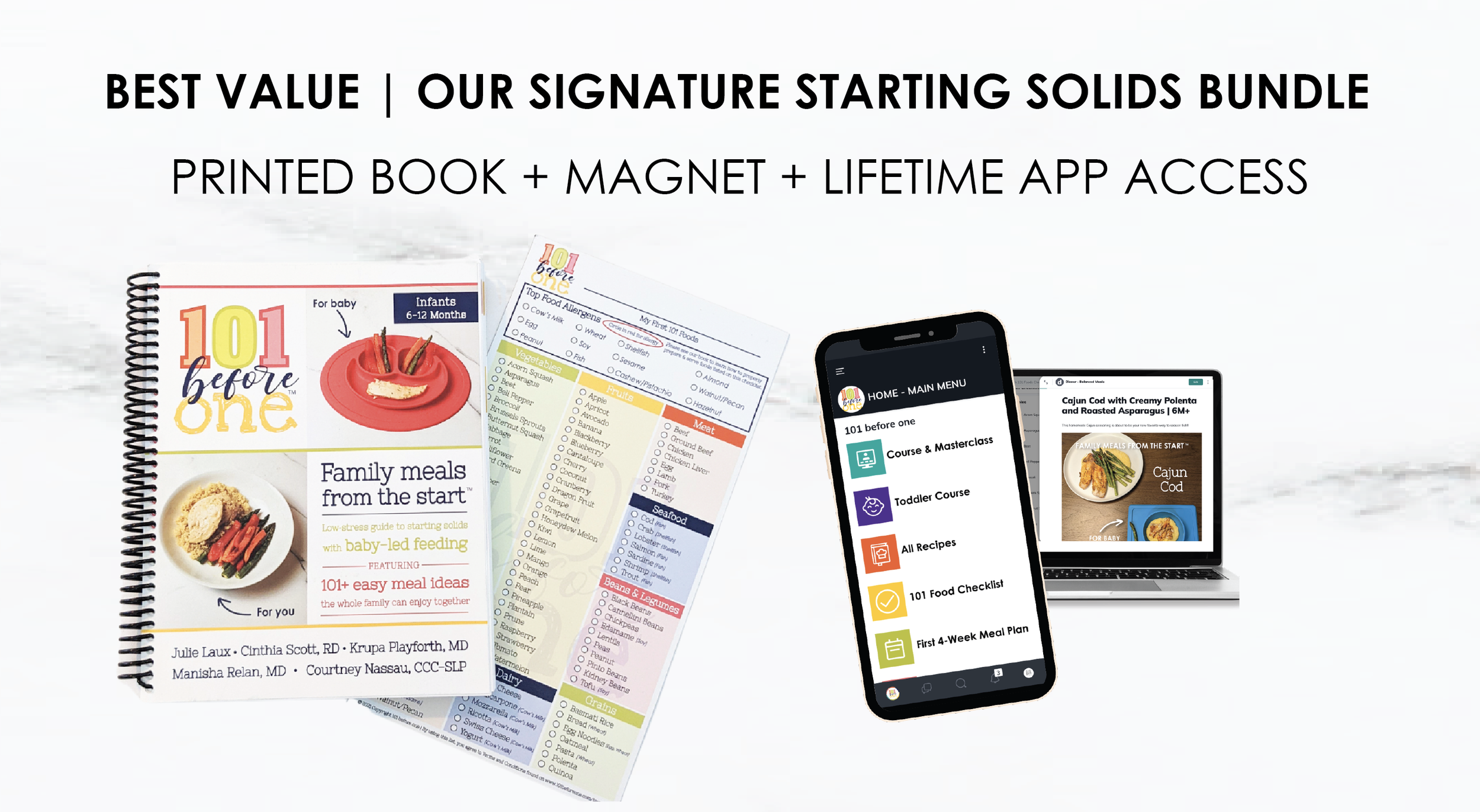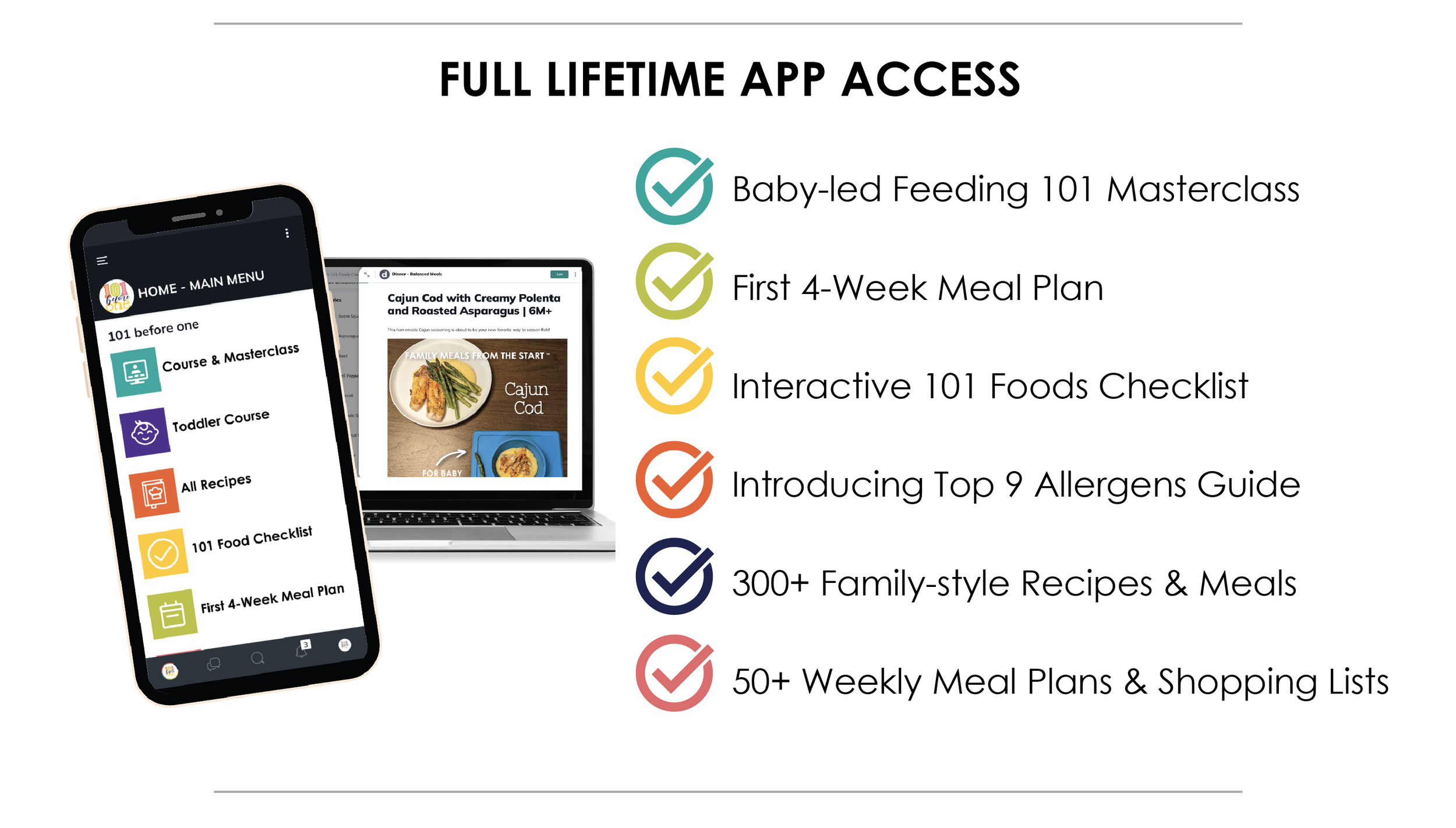
Baby Led Weaning Quick Overview
Introduction to Baby Led Weaning: Expert Tips to Get You Started
Introducing solid foods to your baby can be an exciting but overwhelming milestone. If you're considering the baby-led weaning approach, you've come to the right place. In this ultimate guide, we'll equip you with expert tips to get you started on this incredible journey.
Baby-led weaning is a method of introducing solid foods that allows babies to actively participate in their feeding process. Instead of spoon-feeding purees, baby-led weaning encourages self-feeding from the start. This approach promotes the development of fine motor skills, encourages independence, and exposes babies to a wide range of flavors and textures.
What is baby-led weaning?
Baby-led weaning is a feeding method that allows babies to explore and self-feed solid foods from the very beginning of their introduction to solids. Instead of being spoon-fed purees, babies are given appropriate finger foods that they can pick up, explore, and eat at their own pace. This method respects the baby's natural developmental timeline and encourages them to take an active role in their feeding process.
Benefits of baby-led weaning
There are several benefits to adopting the baby-led weaning approach. Firstly, it promotes the development of fine motor skills as babies learn to grasp and manipulate foods. They also learn hand-eye coordination as they bring the food to their mouths. This self-feeding method can also help with the development of oral motor skills, as babies chew and swallow different textures.
In addition to the physical benefits, baby-led weaning also encourages independence and self-regulation. By allowing babies to decide how much and what to eat, they learn to recognize their own hunger and fullness cues. This can lay the foundation for a healthy relationship with food and prevent overeating later in life.
Is baby-led weaning safe?
When done correctly and under appropriate supervision, baby-led weaning is considered safe. However, there are some important safety precautions to keep in mind. One of the main concerns is the risk of choking. It's crucial to offer foods that are appropriate for your baby's age and development, ensuring they are soft and easy to chew.
Always supervise your baby during mealtimes and be prepared for gagging, which is a normal part of the learning process. Gagging is the body's way of protecting against choking and allows the baby to learn how to handle different textures. It's important to familiarize yourself with the difference between gagging and choking, and to know what to do in case of an emergency.
Multiple research studies have also been done to show that baby-led weaning does not increase the risk of choking.
We have a FREE GUIDE: How to get over your fear of choking that you can download here. It even includes a free handout on choking vs. gagging!
When to start baby-led weaning
The timing for starting baby-led weaning can vary from baby to baby, but most experts recommend waiting until around 6 months of age. At this point, babies have typically reached the developmental milestones necessary for handling solid foods. They should be able to sit up unassisted, have good head control, and show an interest in food by reaching for it.
It's important to note that every baby is different, and it's crucial to watch for signs of readiness rather than strictly adhering to a specific age. If your baby is showing all the signs of readiness before 6 months, it may be appropriate to start introducing solids earlier. However, it's always best to consult with your pediatrician before beginning any feeding method.
How to get started with baby-led weaning
Getting started with baby-led weaning can be an exciting and sometimes messy adventure. Here are some steps to help you navigate the process:
Start with the basics: Begin by offering a variety of easy-to-hold finger foods. Soft fruits and vegetables, such as cooked carrot sticks or ripe avocado slices, are great options. Make sure to cut them into appropriate sizes to prevent choking. We go into specific serving instructions inside our Printed Book and Digital App
Let your baby explore: Allow your baby to touch, smell, and play with the food. This sensory experience is an important part of the learning process. Be patient and let them take the lead in deciding when and how much they want to eat.
Offer a variety of flavors and textures: As your baby becomes more comfortable with self-feeding, introduce a wide range of foods to expand their palate. This can include different fruits, vegetables, grains, and iron-dense foods. Aim for a balanced diet and offer a variety of nutrients.
Remember, baby-led weaning is a gradual process. It's normal for babies to initially play with their food or reject certain textures. Be patient and continue to offer a variety of foods, even if your baby doesn't seem interested at first. It can take multiple exposures for them to develop a taste for certain flavors. Milk is still the primary source of nutrition from 0-12 months.
Be sure to check out our FREE Guide: 6 Things Every Parent Needs to Know before Starting Solids here.
Best foods for baby-led weaning
When it comes to choosing foods for baby-led weaning, it's important to offer a variety of nutrient-dense options. Here are some examples of suitable foods to get you started:
Soft fruits and vegetables: Cooked carrots, sweet potato wedges, banana slices, and ripe avocado are all great options.
Whole grains: Offer cooked quinoa, rice, or pasta in small, manageable pieces.
Iron-dense foods: Soft-cooked chicken, salmon, tofu, or well-cooked lentils are excellent sources of iron for your growing baby.
Dairy and dairy alternatives: Soft cheese, yogurt, or mashed beans can provide calcium and other essential nutrients.
The key is to offer foods that are easy for your baby to pick up and manipulate. Avoid foods that pose a choking hazard, such as whole grapes, nuts, or popcorn. It's always a good idea to consult with your pediatrician or a registered dietitian to ensure your baby is getting all the necessary nutrients.
Inside our Printed Book and Digital App, we walk you through how to introduce 101 nutritious foods to your baby between 6-12 months.
Baby-led weaning tips for success
While baby-led weaning can be a rewarding experience, it can also come with its fair share of challenges. Here are some expert tips to help you navigate the journey:
Create a supportive eating environment: Set aside dedicated meal times and ensure a calm, distraction-free environment. This allows your baby to focus on their food and develop healthy eating habits.
Embrace the mess: Baby-led weaning is a messy process, but it's an important part of learning. Use bibs, splat mats, and high chair covers to contain the mess and make clean-up easier.
Trust your baby's appetite: Babies have a natural ability to regulate their own appetite. Avoid pressuring them to eat or finish their food. Allow them to decide when they're full and respect their cues.
Offer a variety of textures: Gradually introduce different textures, from soft and pureed to more solid and chewable. This helps your baby develop their oral motor skills and adapt to different food textures.
We walk you through step-by-step on how to starting baby-led weaning Inside our Printed Book and Digital App.
Common challenges and how to overcome them
While baby-led weaning can be a positive experience, it's not without its challenges. Here are some common hurdles parents may face and how to overcome them:
Gagging: Gagging is a normal part of the learning process and should not be confused with choking. Stay calm and trust that your baby's gag reflex is protecting them. If they're able to cough or make noise, allow them to work it out on their own. Download our FREE Gagging vs Choking Guide here.
Food rejection: It's common for babies to initially reject certain foods or textures. Remember, taste preferences develop over time, and it may take multiple exposures for your baby to accept new flavors. Continue offering a variety of foods and be patient.
Nutritional concerns: As your baby becomes more independent with eating, it's natural to worry about their nutritional intake. To ensure they're meeting their needs, offer a balanced diet with a variety of nutrient-dense foods. You may also consider supplementing with a multivitamin if needed.
We have an entire FAQ section inside our Digital App, plus you can send us chat messages for general starting solids questions!
Baby-led weaning vs. traditional spoon-feeding
Baby-led weaning is often compared to traditional spoon-feeding, and both methods have their pros and cons. Here's a brief comparison:
Developmental benefits: Baby-led weaning promotes the development of fine motor skills, hand-eye coordination, and self-regulation. Traditional spoon-feeding focuses more on introducing different flavors and textures.
Independence and self-regulation: Baby-led weaning encourages babies to listen to their own hunger and fullness cues, promoting self-regulation. Traditional spoon-feeding relies on the caregiver to decide how much and what to feed the baby.
Parental involvement: Baby-led weaning requires less direct feeding from the caregiver, allowing them to eat their own meal while the baby explores their food. Traditional spoon-feeding involves more hands-on feeding from the caregiver.
It's important to note that there is no one-size-fits-all approach, and you can incorporate elements of both methods based on your baby's needs and preferences. Ultimately, the goal is to provide a positive feeding experience and promote a healthy relationship with food.
We actually support a combination approach of purees, mashed foods, and finger foods - and no matter what you start with, encourage your baby to feed themselves!
Conclusion
Baby-led weaning is a wonderful way to introduce solids to your baby, allowing them to explore and enjoy a wide range of flavors and textures. By following the expert tips outlined in this ultimate guide, you'll be equipped to start this exciting journey with confidence.
Remember, baby-led weaning is a gradual process, and it's important to be patient and supportive. Embrace the mess, trust your baby's appetite, and offer a variety of nutrient-dense foods. With time, your baby will develop their oral motor skills, taste preferences, and a healthy relationship with food that will last a lifetime. Happy feeding!
Ready to get started?
If you found this post helpful, we share more evidence-based best practices for starting solids inside our 101 before one program.
At 101 before one, we believe babies who eat Family Meals from the Start™ will be happy, healthy eaters for life. Starting solids can be intimidating, but we show you how to introduce 101 different foods to your baby before their first birthday, all through simple, easy-to-follow recipes that the whole family can enjoy.



